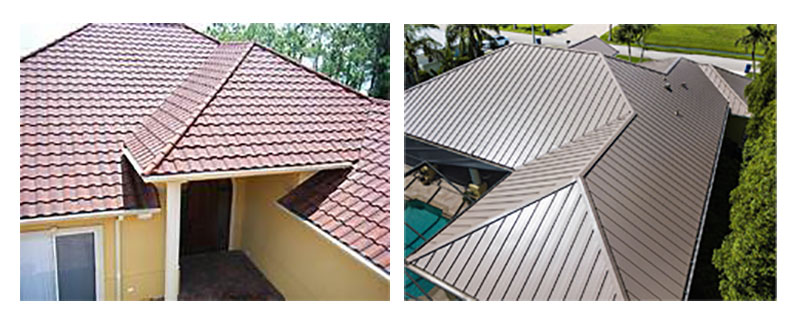Recently several insurance companies have begun depreciating roofs in their policies. While insurance premiums are increasing, coverage is decreasing. This is in favor of the insurance companies
Florida is no stranger to natural disasters, with just about every homeowner worried about protecting their property especially during hurricane season. Of the many types of damage that could affect your property as a result of a hurricane or severe thunderstorm, few can be as problematic as roof damage.
After a rising number of homeowners had their insurance policies canceled or had insurers refuse to offer them coverage only due to the age of their roof, the Florida state legislature implemented new roof requirements for homeowners’ insurance in Florida in May 2022.
 In simple terms it states that if this endorsement is included in your policy, that due to a Windstorm/Hail peril, a full roof replacement will only be paid based on the depreciated schedule below (ACV) even though you have a replacement cost policy. Example: for a 20-year-old shingle roof with this endorsement will only receive 40% of the full replacement cost and then the deductible will be taken off from that remaining amount leaving you in a bad spot in having to come out of pocket significantly and dealing with the mortgage company to expect you to complete a full roof replacement.
In simple terms it states that if this endorsement is included in your policy, that due to a Windstorm/Hail peril, a full roof replacement will only be paid based on the depreciated schedule below (ACV) even though you have a replacement cost policy. Example: for a 20-year-old shingle roof with this endorsement will only receive 40% of the full replacement cost and then the deductible will be taken off from that remaining amount leaving you in a bad spot in having to come out of pocket significantly and dealing with the mortgage company to expect you to complete a full roof replacement.
The material type is used to set the roof surface reimbursement schedule for covered repairs on older roofs. However, the type of materials used for your roof can also affect its longevity and risk for damage in the first place.
Though metal roofing tends to be more expensive upfront, it can last for 50 years or more. Metal roofs are extremely resistant to a wide range of environmental hazards. They can withstand winds of 160 mph — and some can endure even stronger winds. Metal roofing is also resistant to insects and fire damage.
Like metal, concrete or clay tiles can last up to 50 years. Concrete and clay tiles are resistant to heavy rain, fire, salt, and insects. Thanks to their heavier weight than other roofing materials, they also offer great wind resistance. However, clay and concrete tiles are more likely than metal to be cracked or damaged by an impact from a tree branch or other debris.
Wood shakes and shingles have a charming, rustic appearance. However, they are typically better suited for inland areas that are less vulnerable to hurricanes. They require constant maintenance, and are vulnerable to fire and insect damage, as well as rot from excess moisture.
The shape of your roof can significantly influence its risk for hurricane damage. Different roof shapes will be more or less susceptible to high winds In Florida, gable and hip roofs are considered the best option for properties in high wind zones thanks to lower roof slopes and fewer corners where wind gusts could lift the roof.
Don’t fight your insurance carrier alone!! They are in the business of making money…not trying to provide you with the funds to return your home completely to its pre-loss condition.
Check with your agent to see if your policy now has depreciated roof coverage. If it does, you can probably add full coverage.


